I'm trying to fit data that would be generally modeled by something along these lines:
def fit_eq(x, a, b, c, d, e):
return a*(1-np.exp(-x/b))*(c*np.exp(-x/d)) + e
x = np.arange(0, 100, 0.001)
y = fit_eq(x, 1, 1, -1, 10, 0)
plt.plot(x, y, 'b')
An example of an actual trace, though, is much noisier:
If I fit the rising and decaying components separately, I can arrive at somewhat OK fits:
def fit_decay(df, peak_ix):
fit_sub = df.loc[peak_ix:]
guess = np.array([-1, 1e-3, 0])
x_zeroed = fit_sub.time - fit_sub.time.values[0]
def exp_decay(x, a, b, c):
return a*np.exp(-x/b) + c
popt, pcov = curve_fit(exp_decay, x_zeroed, fit_sub.primary, guess)
fit = exp_decay(x_full_zeroed, *popt)
return x_zeroed, fit_sub.primary, fit
def fit_rise(df, peak_ix):
fit_sub = df.loc[:peak_ix]
guess = np.array([1, 1, 0])
def exp_rise(x, a, b, c):
return a*(1-np.exp(-x/b)) + c
popt, pcov = curve_fit(exp_rise, fit_sub.time,
fit_sub.primary, guess, maxfev=1000)
x = df.time[:peak_ix+1]
y = df.primary[:peak_ix+1]
fit = exp_rise(x.values, *popt)
return x, y, fit
ix = df.primary.idxmin()
rise_x, rise_y, rise_fit = fit_rise(df, ix)
decay_x, decay_y, decay_fit = fit_decay(df, ix)
f, (ax1, ax2) = plt.subplots(1, 2, figsize=(10, 4))
ax1.plot(rise_x, rise_y)
ax1.plot(rise_x, rise_fit)
ax2.plot(decay_x, decay_y)
ax2.plot(decay_x, decay_fit)
Ideally, though, I should be able to fit the whole transient using the equation above. This, unfortunately, does not work:
def fit_eq(x, a, b, c, d, e):
return a*(1-np.exp(-x/b))*(c*np.exp(-x/d)) + e
guess = [1, 1, -1, 1, 0]
x = df.time
y = df.primary
popt, pcov = curve_fit(fit_eq, x, y, guess)
fit = fit_eq(x, *popt)
plt.plot(x, y)
plt.plot(x, fit)
I have tried a number of different combinations for guess, including numbers I believe should be reasonable approximations, but either I get awful fits or curve_fit fails to find parameters.
I've also tried fitting smaller sections of the data (e.g. 0.12 to 0.16 seconds), to no greater success.
A copy of the data set for this particular example is here through Share CSV
Are there any tips or tricks that I'm missing here?
Edit 1:
So, as suggested, if I constrain the region being fit to not include the plateau on the left (i.e. the orange in the plot below) I get a decent fit. I came across another stackoverflow post about curve_fit where it was mentioned that converting very small values can also help. Converting the time variable from seconds to milliseconds made a pretty big difference in getting a decent fit.
I also found that forcing curve_fit to try and pass through a few spots (particularly the peak, and then some of the larger points at the inflection point of the decay, since the various transients there were pulling the decay fit down) helped.
I suppose for the plateau on the left I could just fit a line and connect it to the exponential fit? What I'm ultimately trying to achieve there is to subtract out the large transient, so I need some representation of the plateau on the left.
sub = df[(df.time>0.1275) & (d.timfe < 0.6)]
def fit_eq(x, a, b, c, d, e):
return a*(1-np.exp(-x/b))*(np.exp(-x/c) + np.exp(-x/d)) + e
x = sub.time
x = sub.time - sub.time.iloc[0]
x *= 1e3
y = sub.primary
guess = [-1, 1, 1, 1, -60]
ixs = y.reset_index(drop=True)[100:300].sort_values(ascending=False).index.values[:10]
ixmin = y.reset_index(drop=True).idxmin()
sigma = np.ones(len(x))
sigma[ixs] = 0.1
sigma[ixmin] = 0.1
popt, pcov = curve_fit(fit_eq, x, y, p0=guess, sigma=sigma, maxfev=2000)
fit = fit_eq(x, *popt)
x = x*1e-3
f, (ax1, ax2) = plt.subplots(1,2, figsize=(16,8))
ax1.plot((df.time-sub.time.iloc[0]), df.primary)
ax1.plot(x, y)
ax1.plot(x.iloc[ixs], y.iloc[ixs], 'o')
ax1.plot(x, fit, lw=4)
ax2.plot((df.time-sub.time.iloc[0]), df.primary)
ax2.plot(x, y)
ax2.plot(x.iloc[ixs], y.iloc[ixs], 'o')
ax2.plot(x, fit)
ax1.set_xlim(-.02, .06)






